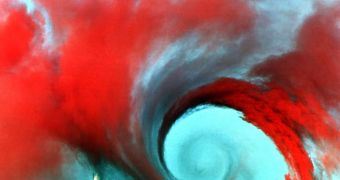Turbulence is never desirable whenever talking about airplanes, however it is an effect generated by the mere passing of the aircraft through a mass of air, and it cannot be ignored whether landing or taking off. Turbulences are vortexes of air determined by a rapid variation in the pressure and velocity of the fluid in relation to space-time. First, a primary vortex is generated which in turn causes a second vortex that leads to the decay of the first one.
The new study conducted at the Institute of Computational Science of ETH Zurich reveals that turbulences can be far more dangerous than previously thought. Unlike previous simulations which involved modeling a large mass of fluid, this particular study analyzes the flow of air masses by dividing them into separate cells which can be interpreted as independent from one another. By doing so, the researchers increased the number of studied particles from several millions to more than 6 billion.
As if turbulences weren't as bad enough as they were, it now seems that they can be up to two or three times more powerful than previously calculated, fact which could prove to pose serious problems to future aircraft manufacturers. Turbulences are not necessarily dangerous for the aircraft that creates it, albeit it could determine the crash of an airplane passing through the respective vortex.
Due to the extremely high resolution of the simulations, researchers were even able to study the interactions between very small vortices thus allowing a better evaluation of the Reynolds number - characterizing the type of the flow of a fluid, turbulent or laminar. According to Petros Koumoutsakos, the Reynolds number is in direct relation to the speed and the span of the wing or the aircraft creating the vortex.
The simulations have been conducted on a supercomputer created by IBM with 16,000 processors and a computational power equivalent to about 10,000 laptops. The study also reveals that by applying modifications in the design of the aircrafts, one can reduce the formation of turbulence and catalyze their decay, fuel consumption and noise. While considering that statistics show that the number of air passengers could double in the next two decades or so, scientists realized that a reduction of vortexes is imperative, especially for reduction of flight frequencies.

 14 DAY TRIAL //
14 DAY TRIAL //